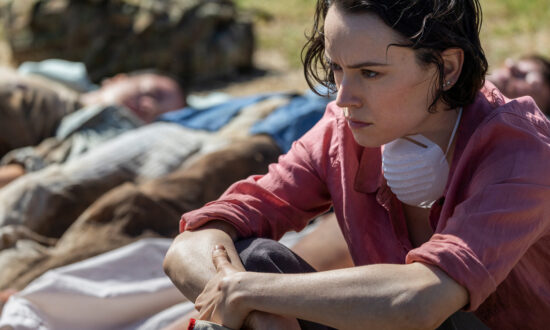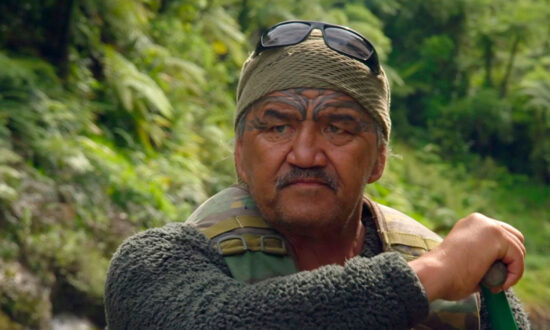The Sami people in Norway in the late 1970s were not rounded up and persecuted, they were excluded through shame.
Norwegian language and culture dominated, and those who spoke Sami risked being ostracised, shut out of a job, refused service in a pub, or made the butt of Laplander jokes. Samis who married Norwegians brought up their children as Norwegian in pursuit of a better life.
So, we meet Ester (played by Ella Marie Haetta Isaksen, who is a Sami activist), whose parents were Sami but whose mother married a Norwegian after her father died. Ester is assimilated and takes a job in an elementary school in northern Norway, where she laughs at the insider jokes about the poor kid at school in his Sami boots. But when her cousin, Mihkkal (Gard Emil), who wears the distinctive gatki with its flounces and embroidered trim, takes her to a protest over the damming of the Alta River, she has the first glimmerings of what is at stake.
The film moves slowly and the protestors are inexperienced, uncertain and scared, with no clear path to take. The river is rich in salmon which feed those who live along it, and is part of their cultural connection to land. You want someone to call Bob Brown to organise a magnificent poster showing the river in all its majesty (the Franklin dam fight in Tasmania was just about to begin around the same time this story is set).

Get InReview in your inbox – free each Saturday. Local arts and culture – covered.
Thanks for signing up to the InReview newsletter.
Instead, Ester – who has been outed at her school as Sami – joins a hunger strike, a tactic inspired by the IRA. As she becomes more radicalised, so Mihkkal grows more disillusioned.
This is not a Hollywood movie and there are no dramatic twists and turns. The hunger strike buys them time but the showdown is yet to come. The film’s strength is in its small moments; the tragic reindeer herder who has no reason to live after being forced to sell his flock, and the beautiful concept of the joik, the Sami song used to evoke a person and their nature.
It is not a firebrand story, and Ester and her mother confront each other over their own desire not to be who they are. “I hate being Sami,” Ester screams inside her dead father’s boat shed, which looks out onto the river where he used to fish.
The themes are not new but the story, based on real events and written and directed by Ole Giaever, is richly told. It is not destined for a major cinema release and there are other bigger films in the Scandinavian Film Festival program that will return in season. This small story, chosen to open the festival, takes us into the heart of a struggle for indigenous recognition in a community that is worlds away yet feels close to home.
Let the River Flow is the opening night film at the Scandinavian Film Festival, which is at Palace Nova Eastend and Prospect from July 19 until August 9.
Support local arts journalism
Your support will help us continue the important work of InReview in publishing free professional journalism that celebrates, interrogates and amplifies arts and culture in South Australia.
Donate Here




